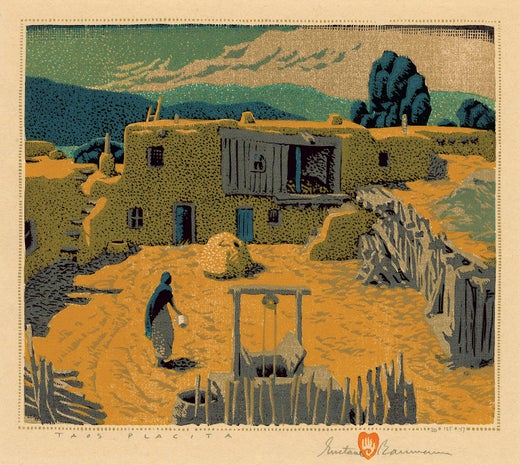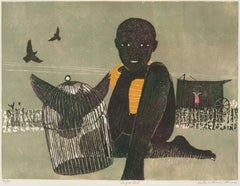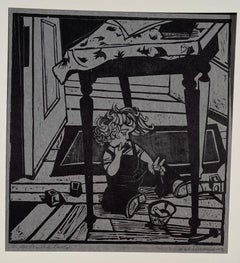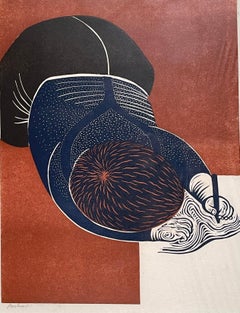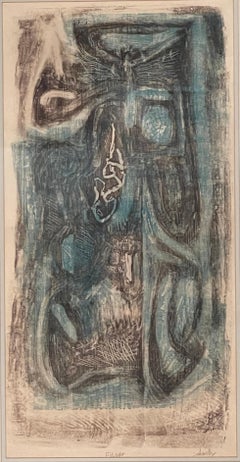Gustave BaumannAN EAGLE CEREMONY AT TESUQUE PUEBLO
About the Item
- Creator:Gustave Baumann (1881-1971, American, German)
- Dimensions:Height: 20 in (50.8 cm)Width: 16 in (40.64 cm)
- Medium:
- Period:
- Condition:
- Gallery Location:Portland, ME
- Reference Number:1stDibs: LU367314638922
Gustave Baumann
Gustave Baumann was born in Magdeburg, Germany, on June 27, 1881. Baumann immigrated to the USA as a child. He grew up in Chicago but became curious about New Mexico. He visited friends there in 1917 and settled in Santa Fe in 1918. He spent over 50 years there, where he participated in the art community. He created woodblocks from which he made prints and also became a carver of saints and marionettes, working with the Marionette Theatre. Baumann also created numerous paintings in bright colors. His woodcut subjects are church figures, scenes of sacred Indian pictographs and landscapes, including the Grand Canyon. During the 1930s, Baumann was a Works Progress Administration co-ordinator for Santa Fe. He died in Santa Fe on October 8, 1971.
You May Also Like
2010s Contemporary Figurative Prints
Woodcut
2010s Contemporary Figurative Prints
Woodcut
2010s Contemporary Figurative Prints
Woodcut
2010s Contemporary Figurative Prints
Woodcut
1990s Expressionist Figurative Prints
Etching, Woodcut
1980s Expressionist Figurative Prints
Woodcut
1990s Contemporary Figurative Prints
Woodcut
1980s Expressionist Figurative Prints
Woodcut
1990s Contemporary Abstract Prints
Screen, Woodcut
21st Century and Contemporary Contemporary Figurative Prints
Woodcut
More From This Seller
View All1960s Figurative Prints
Woodcut
1930s Figurative Prints
Woodcut
1940s Figurative Prints
Woodcut
1940s Figurative Prints
Woodcut
1950s Figurative Prints
Woodcut
1940s Figurative Prints
Woodcut
